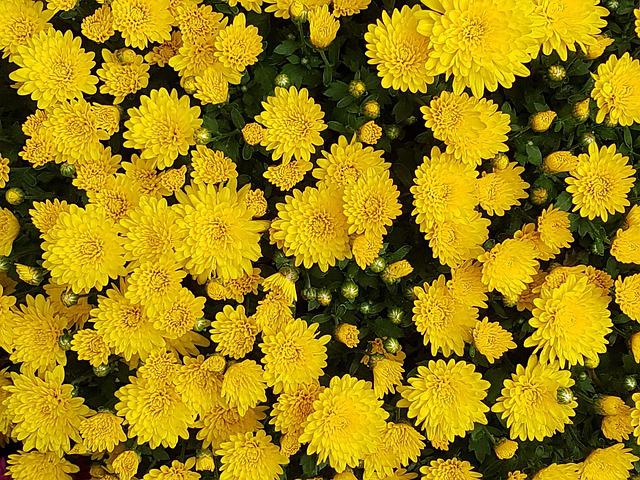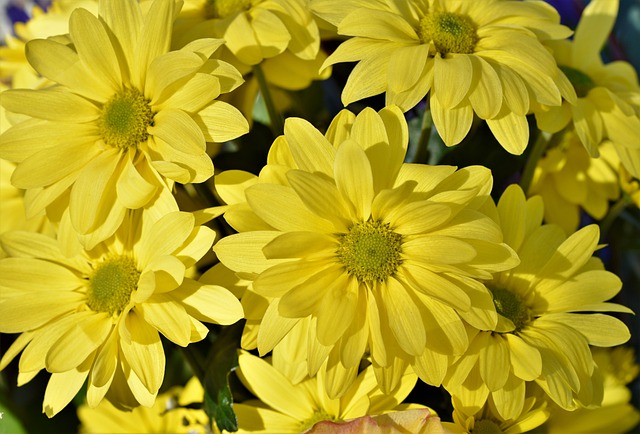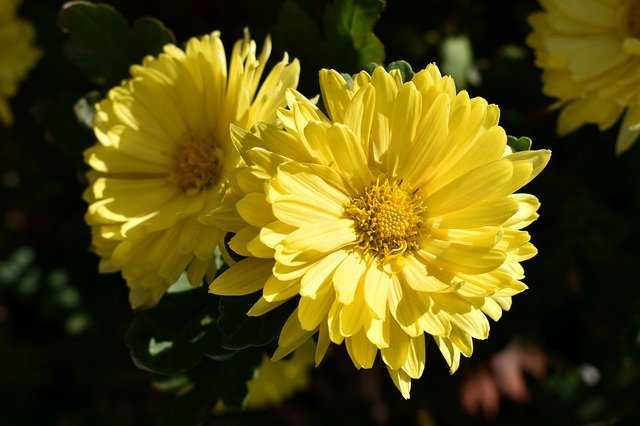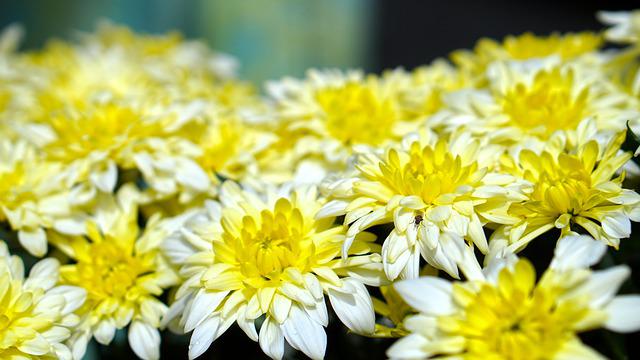Where to Plant Chrysanthemums? What You Need To Know Before You Start Growing Chrysanthemums

Chrysanthemums prefer warm climates and do best if grown near other flowering plants or indoors during cold winters. They are a favorite flower of many and can be planted in the ground or in containers. When planting them in the soil, make sure to amend the area with organic matter.
Once the bloom has fallen from a perennial chrysanthemum, you can replant the stem in your garden and enjoy its beauty year after year. In USDA plant hardiness zones 5 through 9, chrysanthemums can be planted directly from a container once the flowers have died.
Chrysanthemums thrive in an open, sunny location but can tolerate partial shade, particularly if it provides afternoon sun protection. They prefer soil that has been amended with compost and other organic matter and is well-drained.
Table of Contents
Best Time to Plant Chrysanthemums
In the Northern Hemisphere, chrysanthemums are typically planted in early to mid-March and bloom by late May. In the Southern Hemisphere, chrysanthemums should be planted in October and will bloom from December through February.
Care Tips for Chrysanthemums
Light
Mums need full sun but will survive in partial shade. Growing them in direct sunlight usually results in more flowers. On the other hand, in hotter climates, plants appreciate afternoon shade. Because mums bloom in response to the length of daylight, you should not plant them where they might be subjected to artificial light at night, such as a patio light, window light, or streetlight.
Soil
These vegetations can adapt to a wide range of soil conditions, but they thrive in moist, fertile soil with good drainage. The plants will rot if the soil doesn’t drain well. Soil with a pH between 6.5 and 6.7 is ideal, as this range is slightly acidic.
Water
To thrive, mums need a constant supply of water. Water them an inch once a week at the beginning of the growing season and then twice or thrice a week as the flower buds expand and the flowers bloom.
Grow them in containers by wetting the soil to the point where water drains out of the bottom (make sure the pot has drainage holes). The soil and the bottom of the container should be well-drained. The soil ought to be kept moist but not drenched. Root rot and other diseases can be brought on by overly wet soil.

Climate Conditions, Including Temperature and Humidity
Mums thrive in mild winters and summers. The plants may have trouble surviving in high temperatures. Without adequate protection from the cold, plants in regions with harsh winter freezes can perish. While humidity is ideal for mums, too much can cause rot or disease, so be sure to provide plenty of ventilation if the humidity level is high.
If you’re planting mums in the fall, it is necessary to wrap its roots and crown them in insulation to improve the plant’s chances of survival in colder climates. It would be best to wait until spring before removing the plant leaves. After the frost has turned them brown, do not prune them back. Then, dig up a pot and place it in a more sheltered garden area, or mulch the plants heavily with at least 4-6 inches before winter. Before the first hard freeze, do so if you decide to relocate the plants.
Heat delay is an option in warmer climates. Flowering may be delayed if the plant is exposed to high temperatures, particularly at night. Heat delay can lead to malformed flower buds, erratic flowering, a misshapen plant crown, and other abnormalities in plant growth and development. Finding cultivars with increased heat tolerance is one solution to this issue in warmer regions.
Fertilizer
During the chrysanthemum’s vegetative stage, nitrogen and potassium are essential nutrients. To encourage strong roots, flower bud formation, and a lush plant, it’s best to fertilize the plants before they start producing flowers. Beginning in March, April, or May (depending on your zone), initiate a feeding cycle. The plants can be fed with a time-released fertilizer (12-6-6) for about three months. If you use a fertilizer that releases its nutrients gradually, you may only have to feed your plants once. After the last chance of frost, you can start feeding your animals. Any new growth stimulated by the nutrients will be protected from frost. It’s best to wait until after July to feed your plants, so the new growth isn’t vulnerable to the frost.
Pests and Diseases
Chrysanthemums are susceptible to several diseases, including leaf spots, powdery mildew, and viruses such as mosaic and stunt.
Prevention is always preferable to treatment. Never plant chrysanthemums in an area where they will be smothered by other plants or in the shade, as this will cause the leaves to retain moisture and become a breeding ground for disease. Provide them with an abundance of fresh air and sunlight.
The usual assortment of pests, including aphids, caterpillars, leafhoppers, leafminers, and spider mites, can infest mums.
Occasionally, deer and rabbits won’t consume chrysanthemum’s fuzzy leaves and fragrant blooms. They give your blueberry bushes a much higher priority.

Garden Design Suggestions
- Since mums have such shallow root systems, they thrive when grown in containers.
- Use those flowering mum pots sold in the fall as annuals so that you can replace summer annuals that have passed their prime. Place the mums in beds, borders, or planters to ensure that there is color up until frost.
- As perennials, they should be planted in beds or along borders in the early spring or fall. They return every autumn bearing additional flowering plants.
- Plant chrysanthemums in clumps or swaths of the same color and variety of flowers all at once. The appearance of densely planted areas is aesthetically pleasing.
- Combine them with other plants that bloom later in the season, such as asters, sedum, goldenrod, or Russian sage.
- You can plant them in the center of sunny borders, cutting, and butterfly gardens.
- Remember that the substances can poison cats, dogs, and horses in mums, so keep that in mind if you have pets that might eat mums.
- One approach is to focus on creating an eye-catching focal point in your garden with large chrysanthemum plants. Alternatively, you can use chrysanthemums as accents throughout your landscape or fill in bare areas between other plants with their colorful petals.
- Group different colors of chrysanthemums together to create a more vibrant landscape. This will help to bring out their true colors and make them look prettier than if they were alone.
- Add tall plants that can provide shade or shelter, like bamboo or laurels, to the area around the chrysanthemums. These trees will also keep the ground moist and cooler in summertime temperatures.
- Place shrubs near the center of your Chrysanthemum Garden so they’re not too close to the fence line or edge of your flower bed, where winds might damage them. Shrubs with durable leaves and branches are best suited for this location. Yews are popular because they are easy to care for and attract butterflies!

